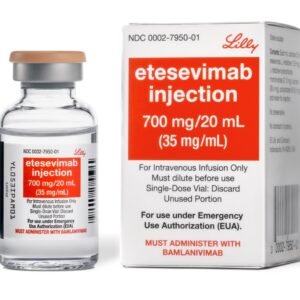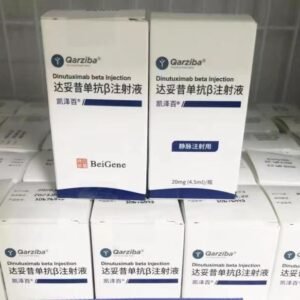Ivabradine HC
Functional Indications:
It is suitable for patients with NYHA II-IV chronic heart failure in sinus rhythm and heart rate >75 beats/minute, accompanied by cardiac systolic dysfunction, in combination with standard treatment beta-blockers, or when it is contraindicated or cannot be used. When tolerating beta-blocker therapy.
Dosage:
There may be differences in the usage and dosage of different dosage forms and specifications of this product. Please read the specific drug instructions for use, or follow your doctor’s advice. Ivabradine Hydrochloride Tablets: Take orally, twice a day, in the morning and evening with meals. 1. The initial treatment of this product is limited to patients with stable heart failure. It is recommended to use it under the guidance of a doctor with experience in treating chronic heart failure. 2. The usually recommended starting dose is 5mg, twice a day. After 2 weeks of treatment, if the patient’s resting heart rate continues to be higher than 60 beats/min, increase the dose to 7.5 mg twice a day; if the patient’s resting heart rate continues to be lower than 50 beats/min or appears to be associated with bradycardia For related symptoms, such as dizziness, fatigue, or hypotension, the dose should be adjusted downward to 2.5 mg (half a 5 mg tablet) twice daily; if the patient’s heart rate is between 50 and 60 beats/minute, 5 mg should be maintained once a day. Twice a day. 3. During treatment, if the patient’s resting heart rate continues to be lower than 50 beats/minute, or symptoms related to bradycardia occur, the dose of 7.5 mg or 5 mg twice a day should be reduced to the next lower dose. If the patient’s resting heart rate continues to be greater than 60 beats/minute, the dose of 2.5 mg or 5 mg twice daily should be titrated to the next higher dose. 4. If the patient’s heart rate continues to be lower than 50 beats/minute or symptoms of bradycardia persist, the drug must be discontinued. 5. Special groups (1) Patients with renal insufficiency: Patients with renal insufficiency and creatinine clearance greater than 15 ml/min do not need to adjust the dose. There is no clinical data on the use of this product in patients with a creatinine clearance rate lower than 15ml/min. Caution is required when using this product in this population. (2) Patients with liver damage: Patients with mild liver damage do not need to adjust the dosage. Patients with moderate liver damage should use this product with caution. There is no severe liver function yet. Studies on the use of this product in patients with severe hepatic insufficiency may result in a significant increase in systemic exposure.
Adverse reactions:
1. Overall safety information (1) Nearly 45,000 patients have participated in clinical studies of this product. The most common adverse reactions are photophenes (phosphenes) and bradycardia, which are dose-dependent and similar to ivabradine. related to its pharmacological effects. (2) Adverse reactions reported during clinical studies are listed according to the following frequency: very common (≥1/10), common (≥1/100 and <1/10), uncommon (≥1/1, 000 and <1/100), rare (≥1/10,000 and <1/1,000), extremely rare (<1/10,000), unknown (cannot be estimated based on existing data). 2. Description of some adverse reactions: (1) Flash phenomenon (phosphene): 14.5% of patients reported flash phenomenon (phosphene), which is manifested as a brief increase in brightness in a local area of the visual field, usually caused by a change in light intensity. Triggered by sudden changes. Phosphenes can also be described as halos, image dissociation (stroboscopic or kaleidoscope effects), colored lights, or multiple images (persistence of vision). Phosphenes usually occur within two months of starting treatment and may recur thereafter and are generally mild to moderate. All phosphenes disappeared during or after treatment, with the vast majority (77.5%) disappearing during treatment. Less than 1% of patients suffer from phosphenes that affect their daily life or interrupt treatment. (2) Bradycardia: 3.3% of patients reported bradycardia, especially within the first 2 to 3 months after the start of treatment, 0.5% of patients developed severe bradycardia (≤40 beats/min ). (3) Atrial fibrillation: A pooled analysis of all phase II/III double-blind controlled clinical trials that lasted at least 3 months and included more than 40,000 patients showed that the incidence of atrial fibrillation in the ivabradine group was 4.86%, compared with 4.86% in the control group. group was 4.08%, the corresponding hazard ratio was 1.26, 95% CI [1.15-1.39].
Medication contraindications:
1. Are allergic to the active ingredients or any excipients of this product. 2. Resting heart rate before treatment is less than 70 beats per minute. 3. Cardiogenic shock. 4. Acute myocardial infarction. 5. Severe hypotension (<90/50mmHg). 6. Severe liver dysfunction
Share:
Products
Our offers
Health Classification
Let us work together to protect precious health



























